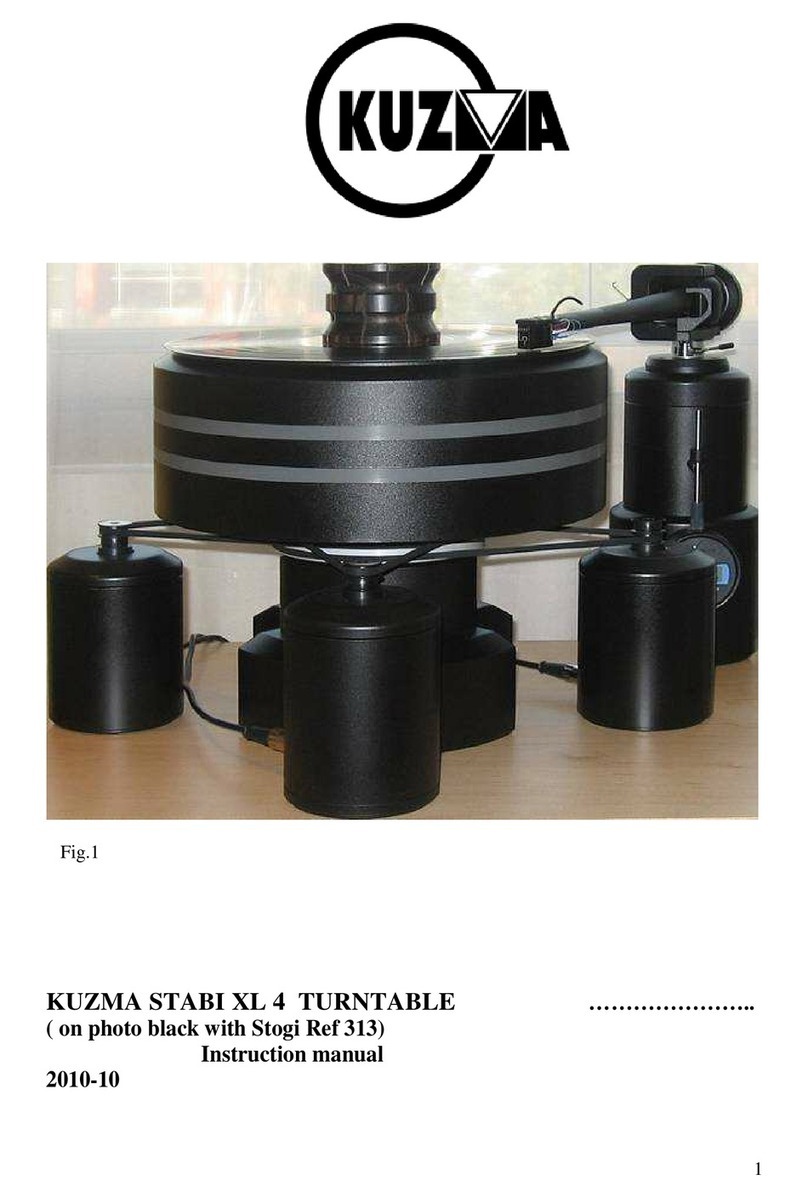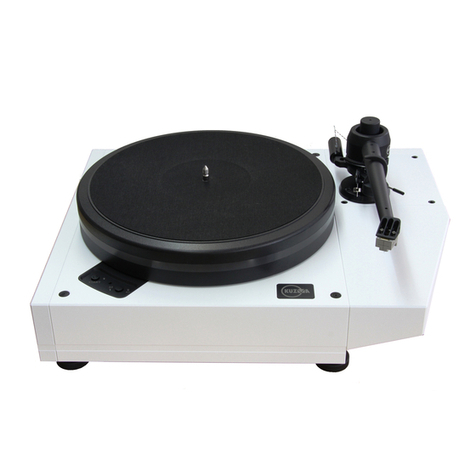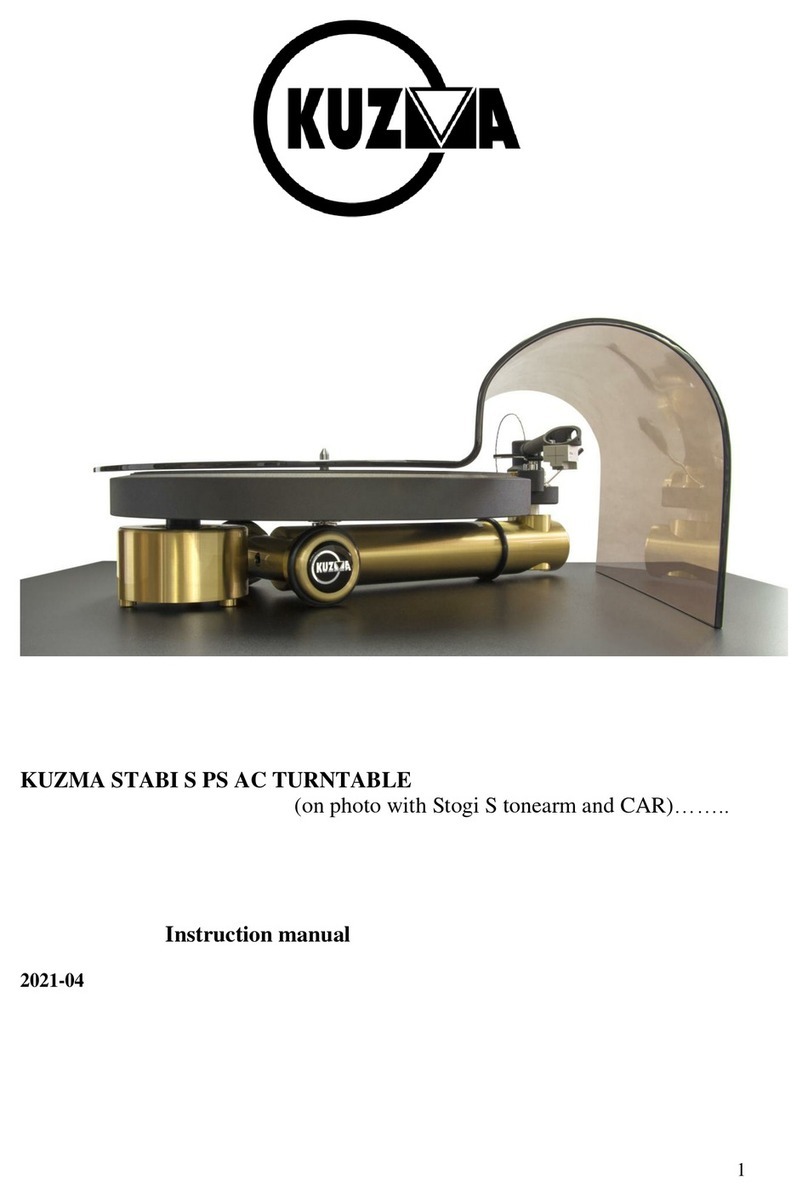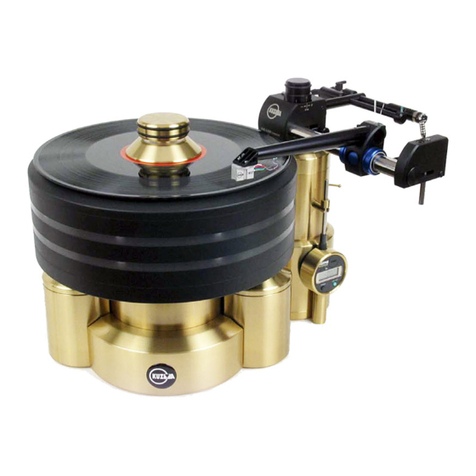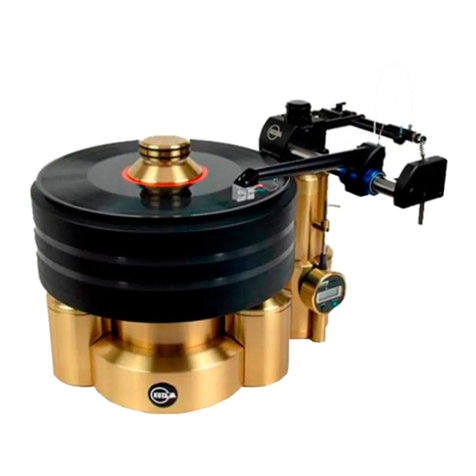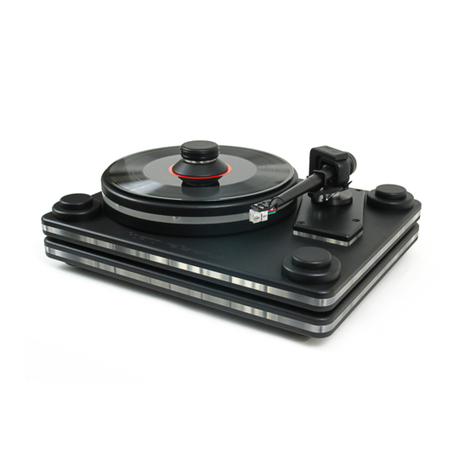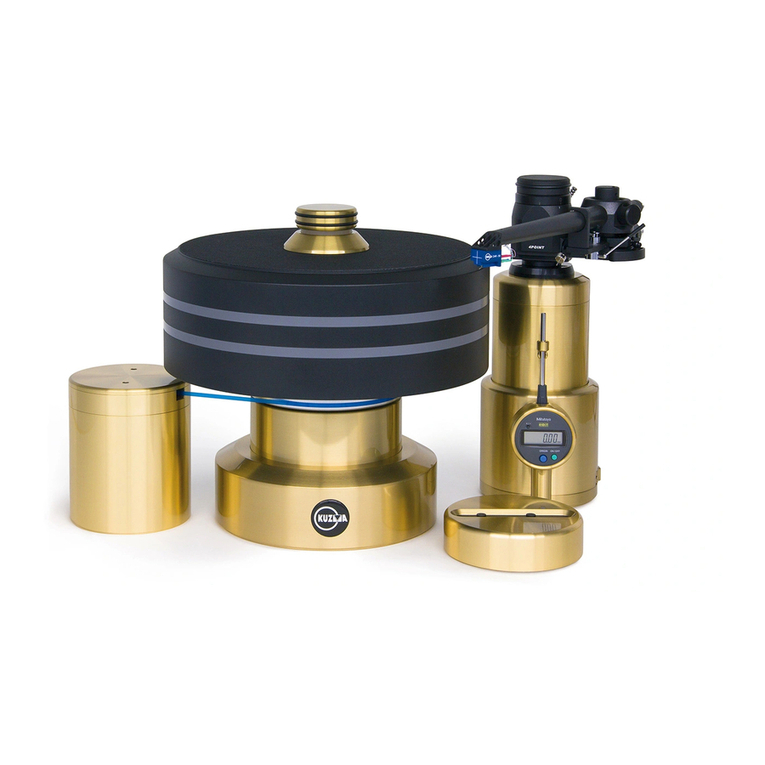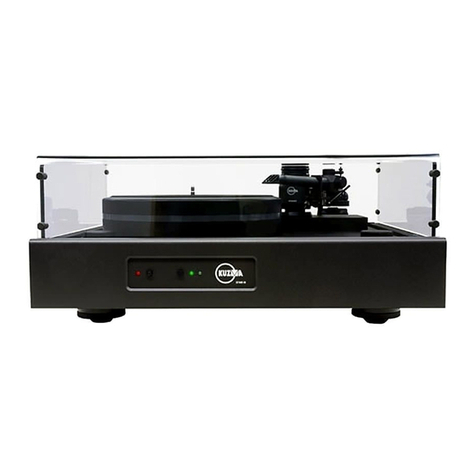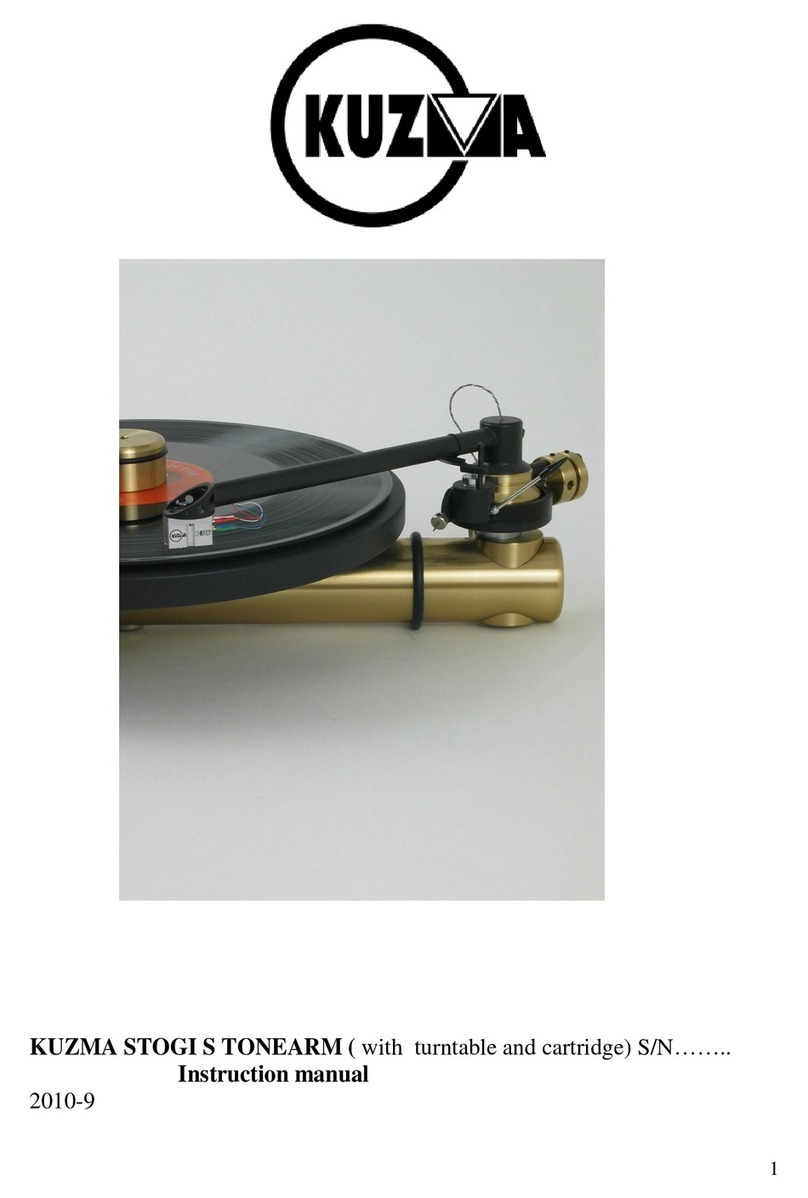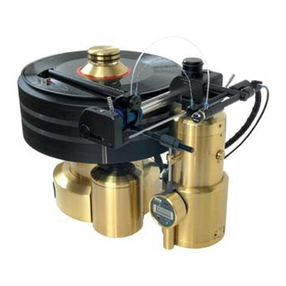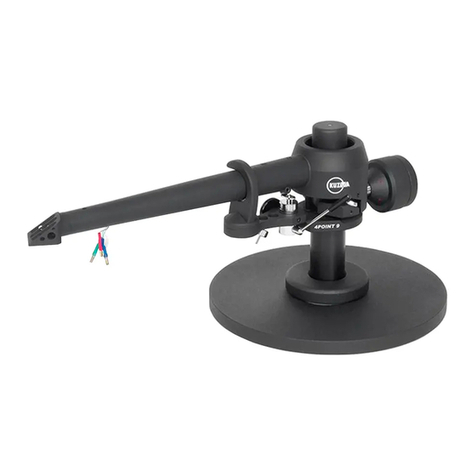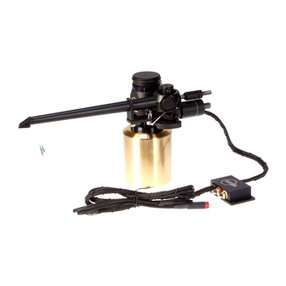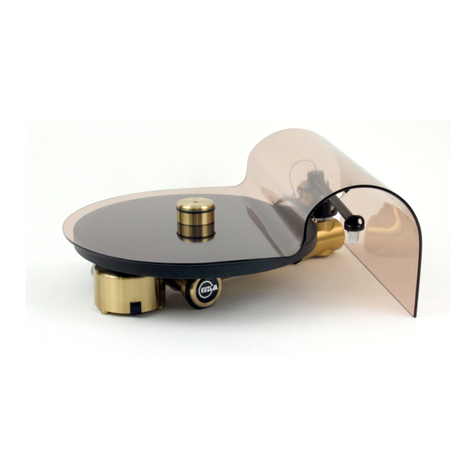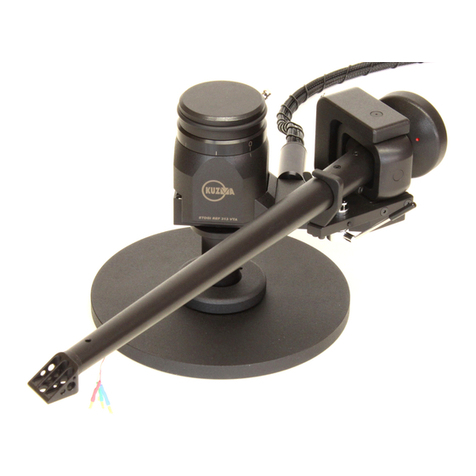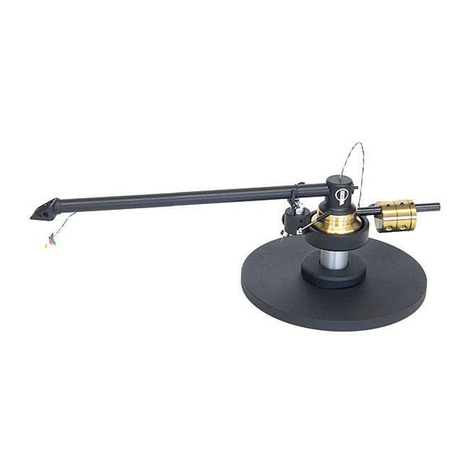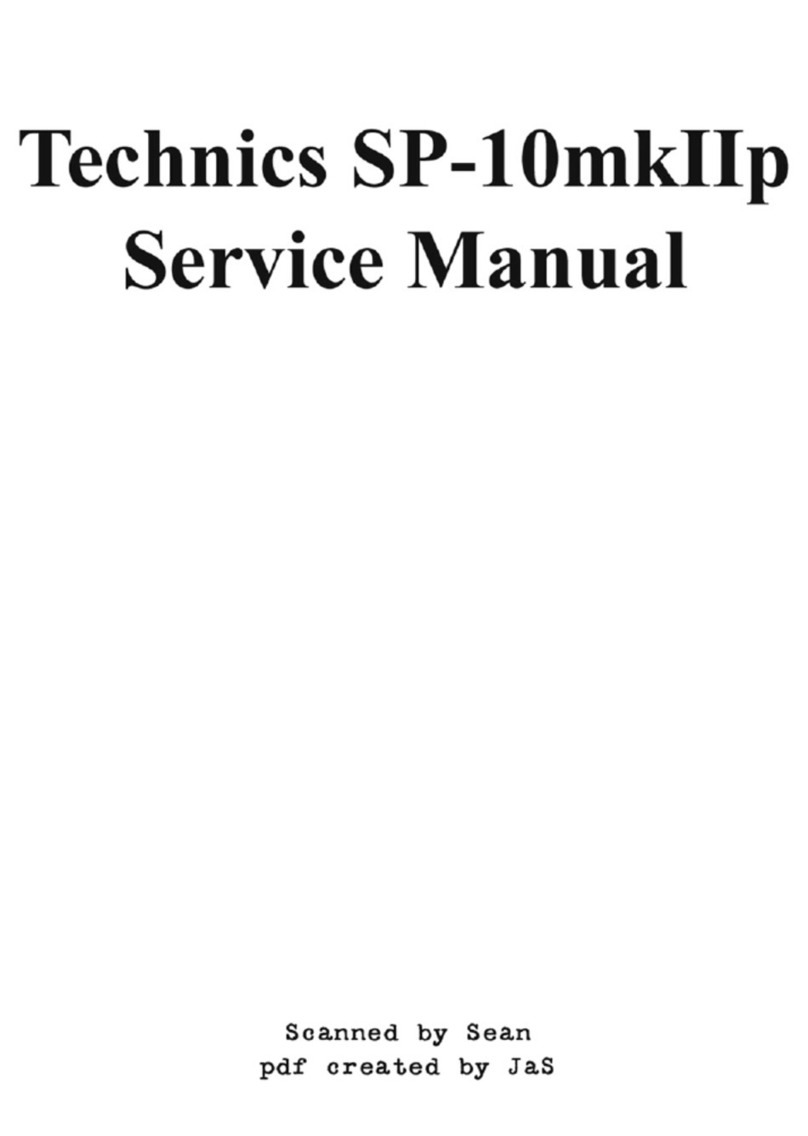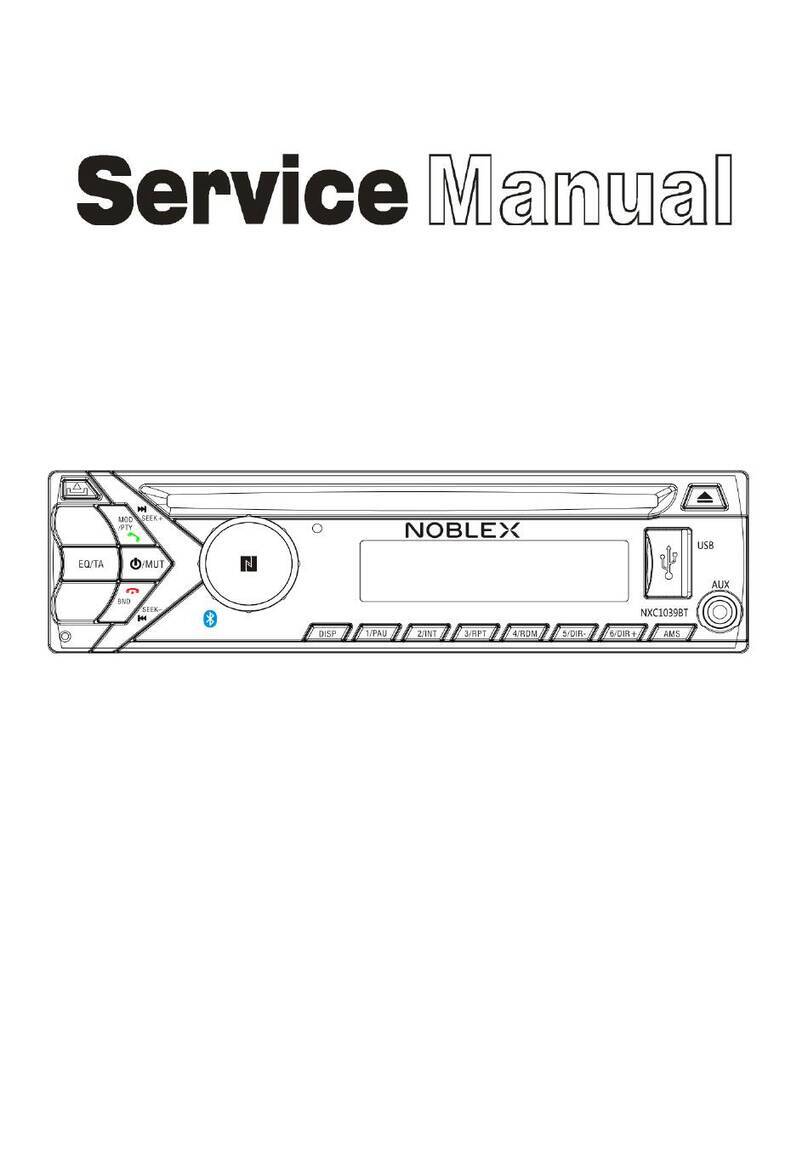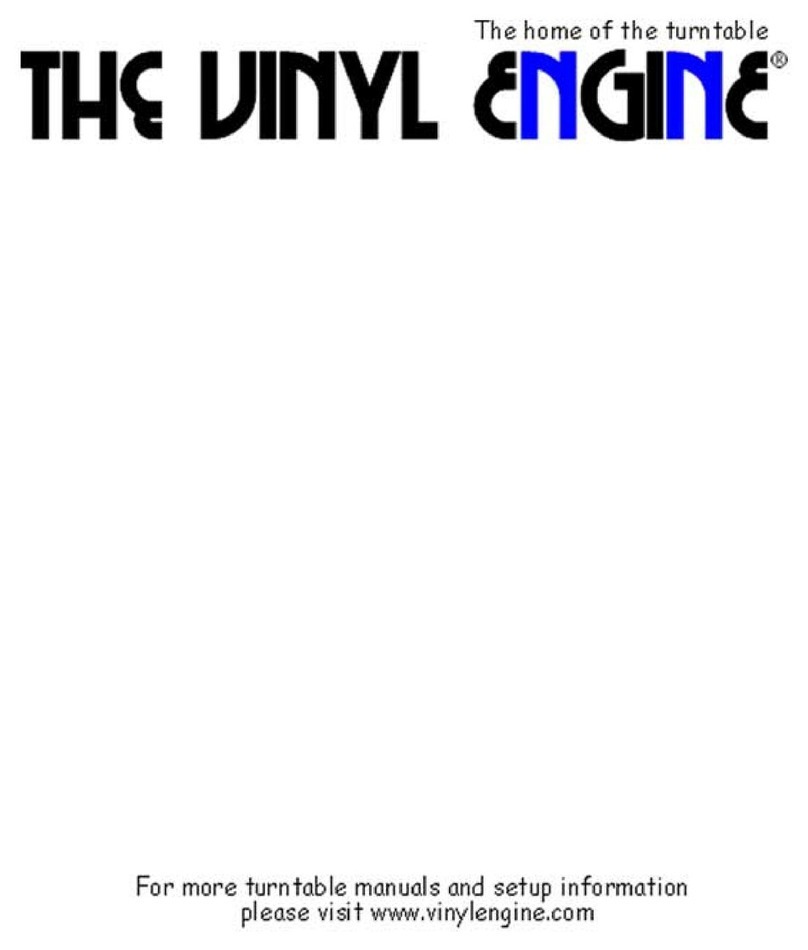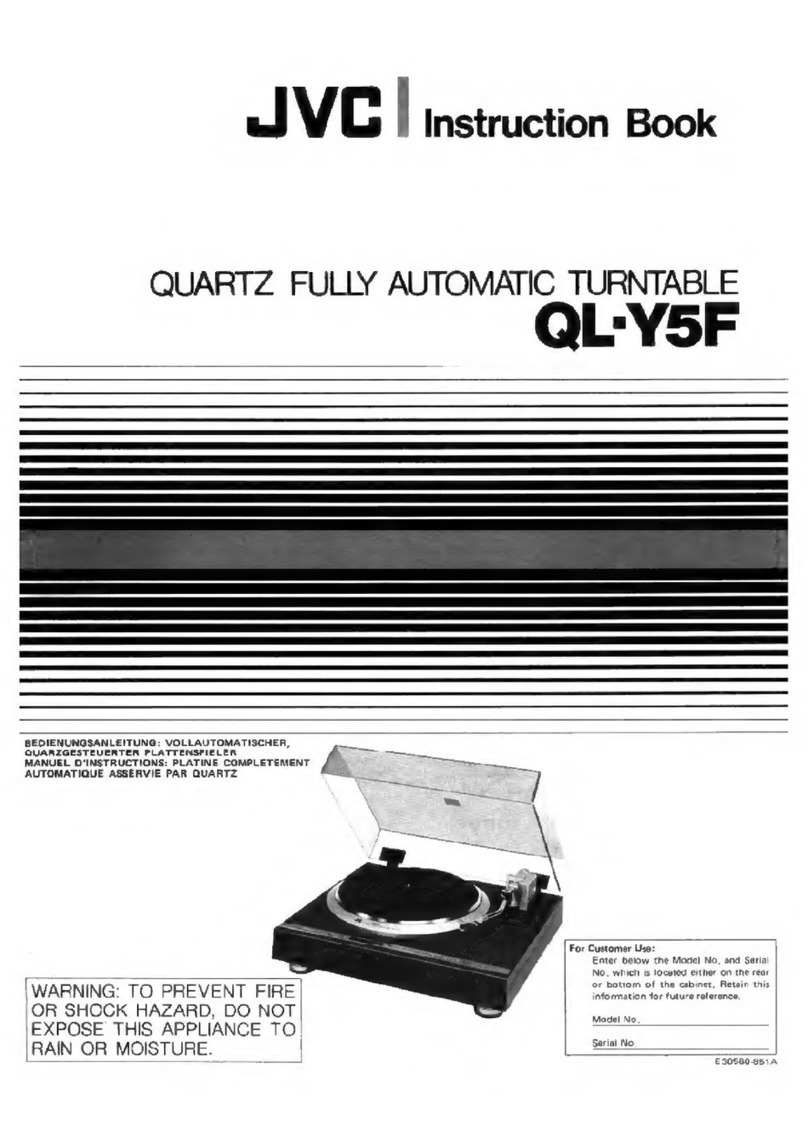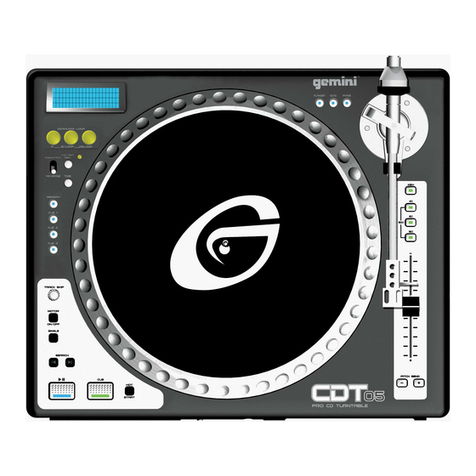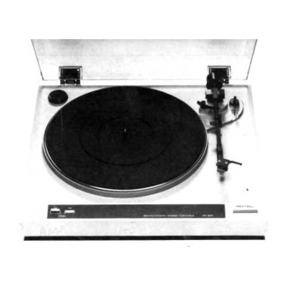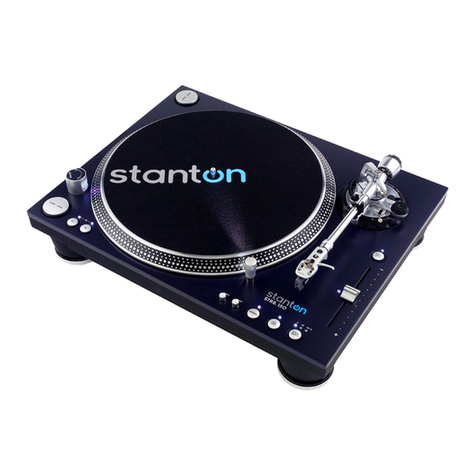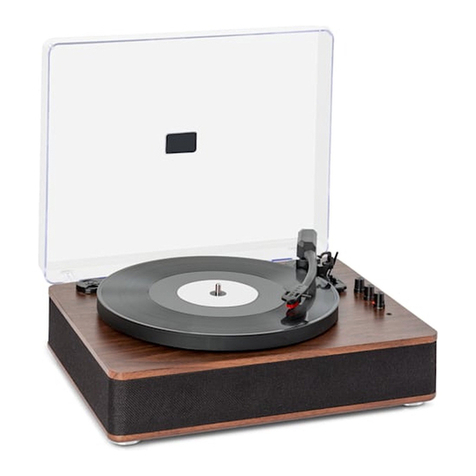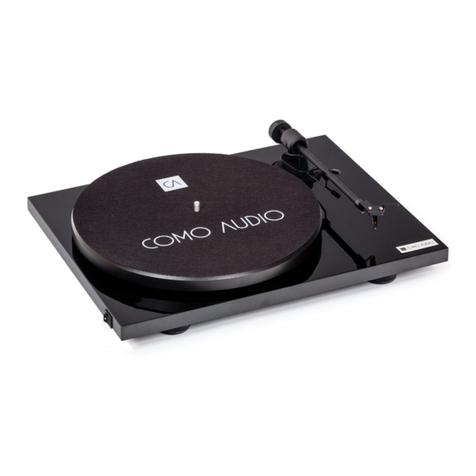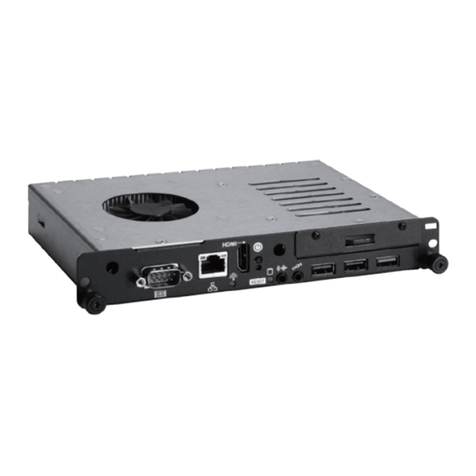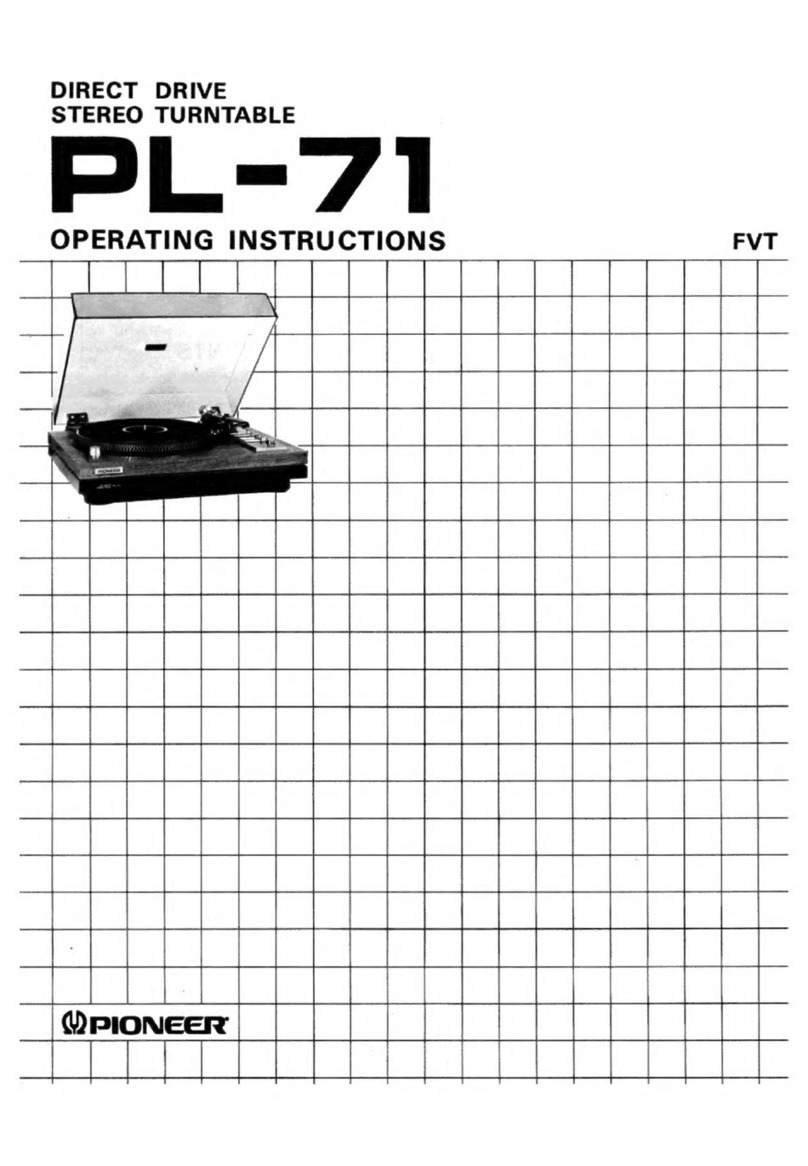10
5.0. Tonearm Setup:
Note: See also 4.4.3.
On the tonearm remove the protective shaft cover and the security wire which has restricted
movement of the arm bearing during transport. The tonearm is not balanced, as there is no
extra weight on the headshell. When the air bearing is functioning, the counterweight will
rotate the tube so that the headshell will go up. To avoid this, mount the cartridge in the
headshell with stylus guard on. Open the valve. Pressure on the small pressure gauge on the
tonearm, should show about 4 bars.
By holding the headshell and lifting it, so that the counterweight support is not touching
the cueing device rod, gently move the tonearm towards the centre of the platter a few
times and also rotate it up and down. If you feel any resistance do not push but check the
air supply or pressure. Check wire and air supply loops to ensure that they are not crossing
each other.
5.1. Mounting of the tonearm:
Again check the height of the tonearm. The basic height should be such, that the centre of the
shaft (centre of vertical movement), is at the height of an LP on the platter. If there is a big
difference, readjust the height of the armbase. If small (1 – 2mm), readjust by rotating the
VTA knob, after first unlocking the VTA lever.
Put the alignment protractor on the platter without a record. Be careful not to touch the
cantilever. Rotate the tonearm so that the base is parallel to and touching the narrow part
of the protractor. This will precisely position the tonearm. Fix the tonearm with the Allen
key 2.5mm. Due to its special construction, it is not necessary to over tighten.
If necessary, due to the added weight of the tonearm, re-balance the turntable. Use a spirit
level to adjust horizontality of the turntable platter. If this is not possible readjust the
turntable support. Do note that spirit levels are not completely accurate. The turntable should
be horizontal; otherwise the tonearm will slide in one direction more than in another.
5.2. Mounting the cartridge:
With Allen screws 2.5mm, fix the cartridge onto the headshell. The position of the needle
should be in line with the end of the headshell when viewed from the side. Then fix cartridge
pins with tweezers.
Cartridge pins are: colours or other symbols:
Right (+) red
Left (+) white
Right ground (-) green
Left ground (-) blue
5.3. Adjustment of tracking force:
The counterweight is made from two parts. Rotating the counterweight position from one red
point to another, changes the tracking force for 0.1grams. Locking is achieved by holding the
part which is nearest to the bearing and rotating the smaller part (view from headshell)
anticlockwise for about quarter of a turn.
